I originally wrote this post for the Razors Through Flesh blog. It’s a good blog and Basilides is a cool guy. I encourage you to check it out.
One of my favorite materials for the game is the Kult tarot deck, it’s beautiful and every card connects in deep and interesting ways to the game’s world. For this blog post, I will explore some of that by showing examples of my process when doing tarot readings for the game. Tarot reading in Kult: Divinity Lost works as a creativity engine – it helps you explore the game’s concepts and develop your scenarios and characters.
Before reading further, I recommend you at least glance through the tarot reading rules for Kult: Divinity Lost. They are available here: Link. You can also keep it open and read the full description of each card as I discuss them, if you like.
I run a Kult scenario with my wife as a player, where she plays the middle-aged surgeon Paul. I won’t get into the details of the story, but the first time the Illusion cracked and tore around him, Paul accidentally attracted some attention from an extradimensional being (from the disadvantage Rationalist).
After this event, it was necessary for me to figure out exactly what that meant. As I had no immediate ideas I could tie into the story, I decided to consult the tarot deck. The rules have a reading template for “Creatures”, so I used that one.
The question I decided to focus on for my reading was written as this:
When Paul saw through the Illusion, something took note of him. What was it?
These are the cards for that reading, as I interpreted them.
1. What is its origin? – Binah (Community)

Revealing Binah as the origin could say a lot of things – it could be a creature directly in Binah’s service, or something inspired by or bound to her principle of Community, or it could be something tied to or born out of a family.
I chose the last of these ideas, because I did not want to directly involve the main character with Binah at this time. Something born out of a family, or a need for family.
2. How can one find more information about it? – Nine of Crescents (Stillness)

I interpreted the Nine of Crescents here as “Absolute Stillness”. No light, no sound, no movement, Achlys. Since the Ace of Crescents is Vortex, which is all of creation, it seemed fitting that the card as far away from it as possible in its suit would be close to Achlys.
With this in mind, I decided that the creature takes a hold of the main character, but the less stimuli is around, the more that hold weakens. In perfect dark, with no sound, only then can one observe the being without being affected by it. This is also, then, the means to study it.
3. What drives the creature? – Kether (Hierarchy)

The entity strives to create hierarchy. Looking back on its origin of “a family”, you can clearly see what it wants – its goal is to enforce or inspire strict hierarchy within a family. The hierarchy I saw in this was that of a strong ruling husband with a subservient family under him. That works fantastically with Paul’s story for reasons I’ll not get into here.
What I pondered for a long time was what the creature’s own position in his hierarchy would be. I decided it would be interesting if the entity saw itself as serving Paul, its ‘summoner’ as it were. It seeks to inspire him to take control of his family, acting as a loyal advisor.
4. What is its weakness? – Seven of Crescents (Reflection)
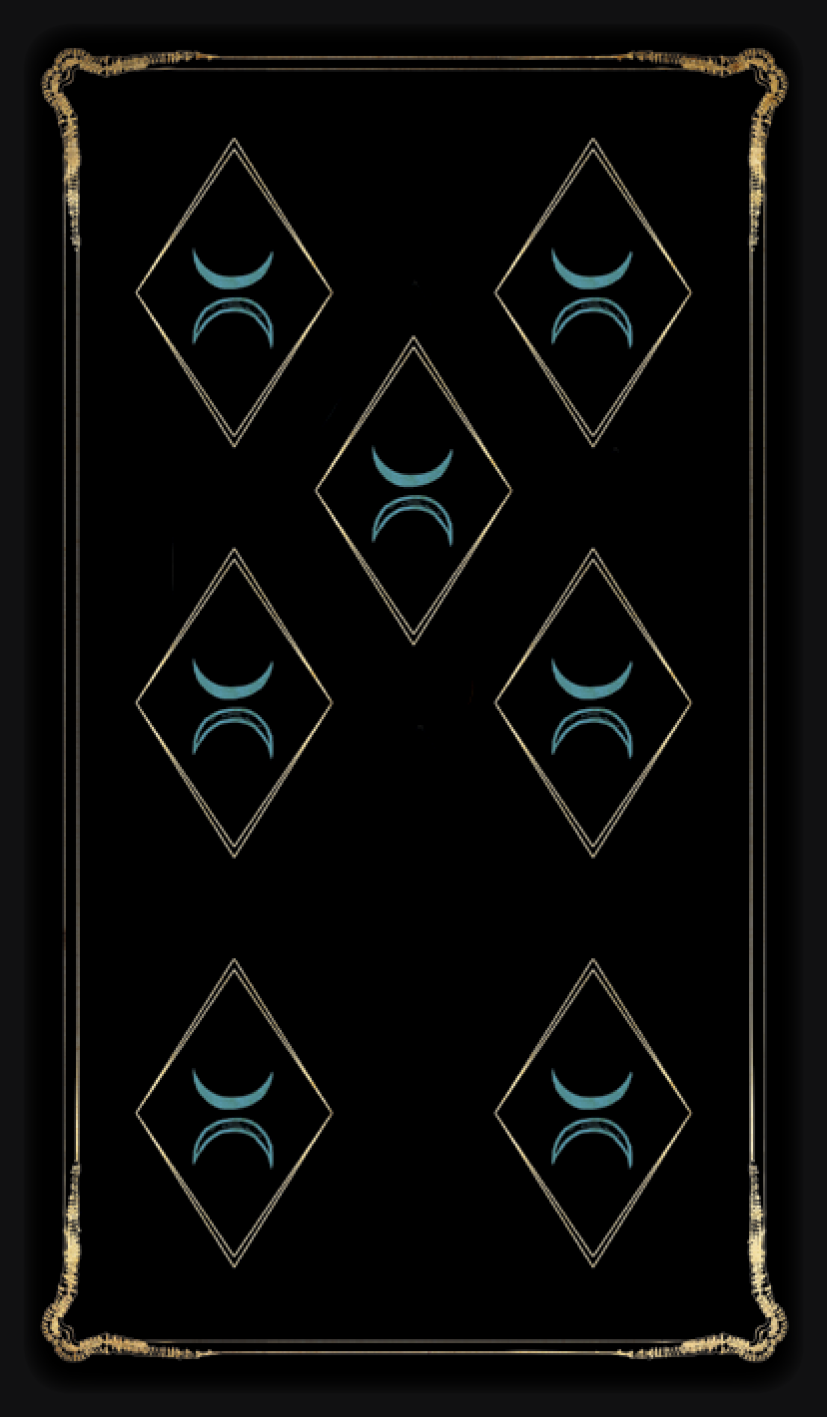
Immediately I am hit with an idea – the entity exists in reflections of Paul. Mirrors are the natural example here, but every reflection be it literal via light and sound, or figurative in pictures or paintings. That is how it communicates.
Now, how would this be a weakness? Without reflections, its communications hold no power. This is why Stillness is the path to understanding the entity – where there is nothing to reflect, the entity’s influence fades entirely and its attempts at manipulation can be studied or ignored.
In addition, the creature may be closely tied to Paul’s own body. Any hurt or pain inflicted on him may also end up hurting it.
5. What is its strength? – Gamaliel (Lust)
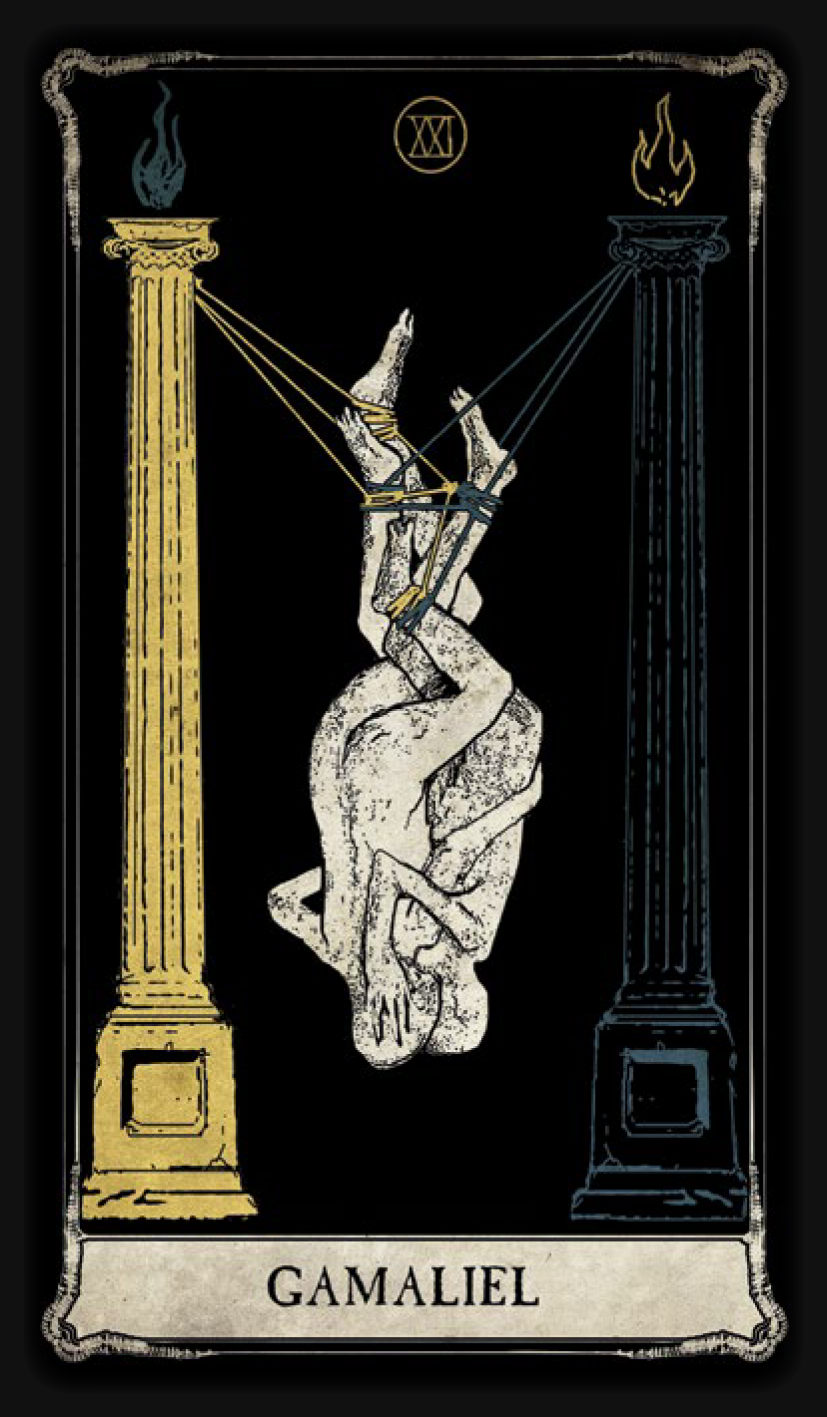
This was a curveball. How do I tie lust and sexual depravity into this?
I ended up with a simple, yet hopefully effective explanation – the being is at its peak when it inspires sexual violence as a mean to enforce family hierarchy. This fuels it, and as rape, depraved sex acts and all related suffering may weaken the mental stability of all those involved (and the Illusion itself), it becomes easier and easier for the being to burrow itself into Paul’s mind.

Those are the cards! Now, I must view these cards as a whole, and tie all these thoughts into some coherent monster to present in the scenario. Below is what I wrote down for myself, as a completed reading.
Paul’s anger and defense of his family when encountering Gal Chak sent ripples through the Illusion, and as he passed out in this heightened state a twisted being from deep within the realms of Limbo heard what it believed was his call. The being sees only Paul, feels as though it is summoned by him, and it is, in all respects, subordinate to him. However, it sees itself a councillor.
The nachtschreck wishes to help Paul control his family, to protect it and to establish him as the powerful protector he can be. It appears in mirrors, inspiring Paul with visions, thoughts and subtle imagery. However, it has no form of its own. It only exists in Paul’s reflections, and anything that happens to Paul, happens to it.
In perfect silence, in perfect darkness, only then can Paul be truly free from its influence, which weakens the less his reflection of sound or sight can appear. Then, he can sense the nachtschreck, and perhaps even learn to banish it.
The nachtschreck’s favorite tool to establish Paul as the alpha is through sex. It wants to establish both Sara and Mallory as subordinate to him by having Paul dominate them. It does not know about the nepharite, nor does it care. After all, their goals are similar. For the moment.

In our second session, Paul was having a conversation with a police officer who shared with him the gruesome details of what would eventually be known as the Dublin Docks murders, where eighteen people (homeless and delinquents) were slaughtered in an abandoned warehouse.
I decided early on that this would be the work of azghouls, as I see the rundown harbor areas of 1980’s Dublin as a perfect link towards Metropolis from which they would have come. Now the question became – who were these azghouls, really, and why were they there?
I decided to use the template for cults for this. It felt like a good fit for a homogenous group of intelligent entities. This was the question I wrote down before starting the reading:
Who are the azghouls roaming around the borderlands in the Dublin docks?
Let’s look at the cards revealed one by one.
1. What drives them? – Five of Roses (Predator)

This spoke to me immediately – they are hunting, or preying, on humans in the area. Five of Roses has a lot of potential readings, but for this, a very literal understanding of predator or hunter is enough.
Azghouls see humans for what they truly are, and these azghouls more than anything aim to exact revenge for ancient suffering and ensure that the humans can never again enslave them. That works perfectly as a drive here, I think.
2. What is their history? – Five of Eyes (Division)
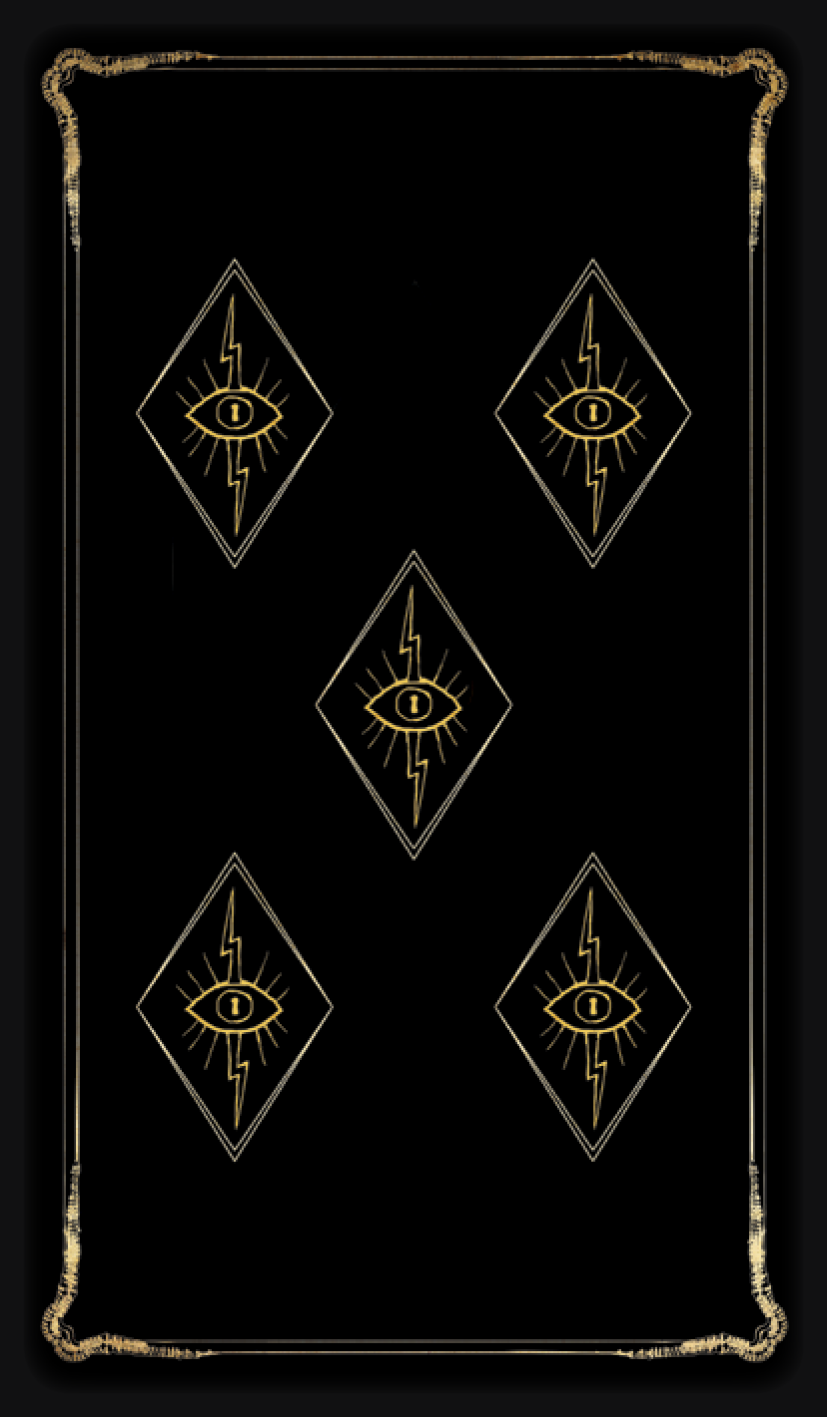
Five of Eyes generally represents division as a form of struggle, conflicts between groups and individuals. It’s in the Eyes suit, so normally it represents Elysium and the Illusion.
However, I decided to take it in a somewhat different direction – these azghouls have been split off from a larger group. Some event in their past cast them into the borderlands between Elysium and Metropolis, and they have lost contact with the rest of their group. A clan, tribe or similar structure.
This lends a sense of desperation to their actions, which I like. They are weaker than they have been in the past.
Five of Eyes could also represent the azghouls’ inability to leave Elysium (considering the suit of Eyes), or even their old eternal struggle with humankind. I chose to consider these paths less.
3. What is their goal? – Eight of Roses (Obsession)
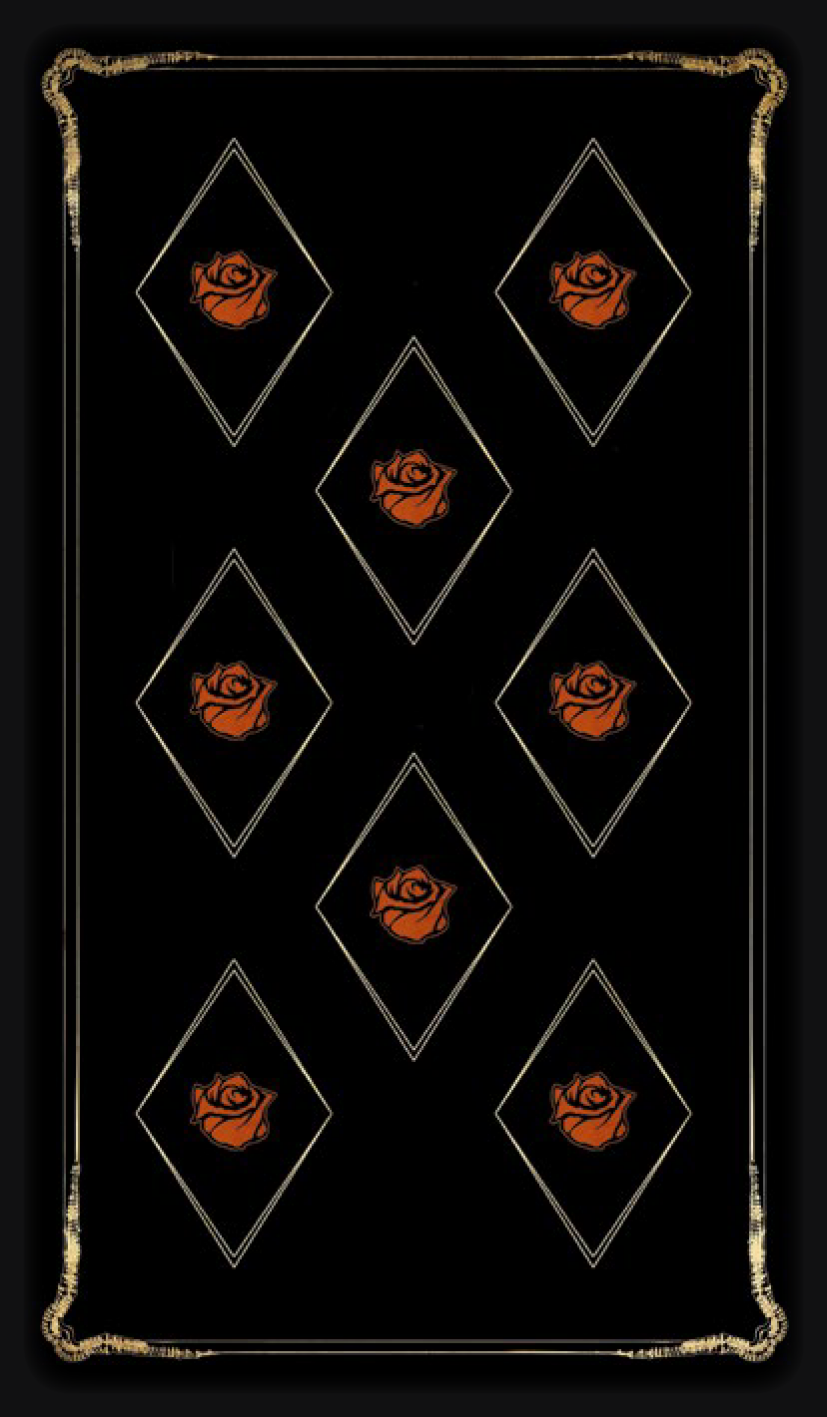
The Eight of Roses was a difficult reveal for me initially. I didn’t see these azghouls as passionate, obsessive creatures, and to use Obsession in terms of a goal was hard.
After some consideration, I finally had a realization: their end goal is to reach Metropolis again and rejoin with their clan. The Eight of Roses represents the clan, rather than the azghoul murderers. This clan must be intensely tribal, a tightly knit collective loyal and loving only to itself. This makes the event in the past much more traumatic and important to the group – these azghouls have not been split from their collective in ages.
4. What is their weakness? – Six of Hourglasses (Hidden)
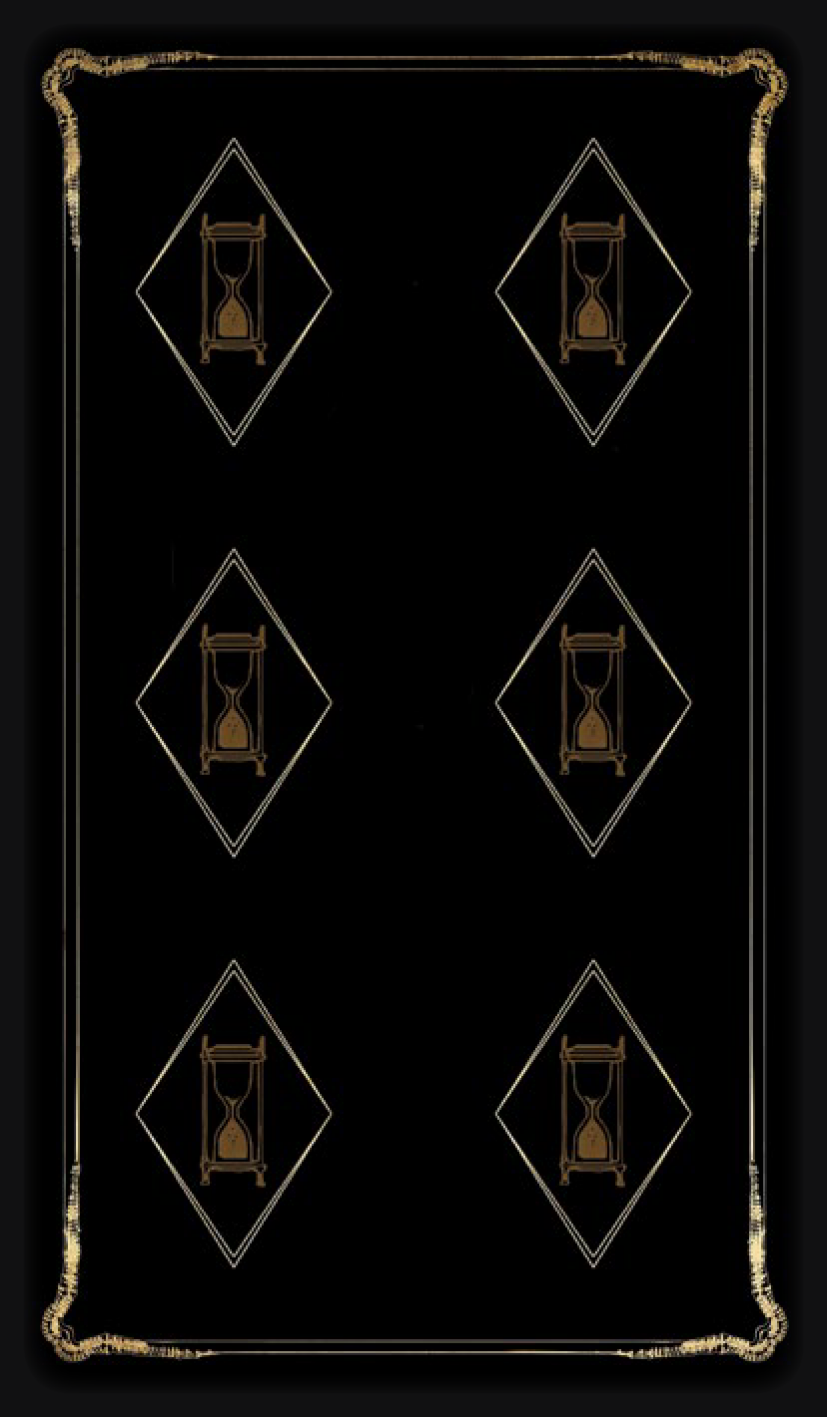
Six of Hourglasses, representing something Hidden, was fairly easy to convey as a weakness – the group struggles to stay in the shadows, and they will be found. Lictors, law enforcement, magicians, many would be keen on tracking them down and have the resources to do so. The sand in their hourglass is running out.
5. What is their strongest resource? – Gamichicoth (Fear)

And what a card to reveal. A mass murder on the scale they’ve committed no doubt causes widespread fear, both in the docks area and Dublin as a whole. They’ve caused a major upset, and continuing on their murderous path could induce widespread panic. Gamichicoth’s servants are no doubt happy to feed off of these events. Their greatest weakness is also their greatest strength.

That went well! Now that each card has been revealed, it’s time to view them together and express them as a completed work. Like last time, these are the final notes I wrote for myself:
The azghouls responsible for the Docks Murders come from a larger group, known as the Devean Cult. This cult lives near the Metropolis waterways, and are intensely and obsessively tribal, shunning all outsiders in the eternal city. Due to some chance event, possibly a spell cast by some magician of time and space, a group of five azghouls were separated from the cult and are now stuck in the borderlands between the Dublin docks and Metropolis, seeking a way home.
These azghouls have not seen humans in a terribly long time, but they are quick to recognize their slavers and torturers. They prey on their former tormentors, stalking through the water and dark buildings to murder humans in truly gruesome ways, inflicting all the pain their own bodies cause them.
Their actions are passionate, bloody, and visual. Lictors within law enforcement will soon find out what’s going on, and humans familiar with the truth will recognize the sudden influence of Gamichicoth in the area. Fear spreads, as the murders are framed as loyalist terrorist attacks. The Ulster Volunteer Force is among those blamed, and pirate radio stations and local media are quick to seize on the hate train.
Within Elysium, the five azghouls stand tall, either swaddled in crude felt coats or blankets. They appear homeless, glaring with a wild anger at passersby with glimmering green eyes. Their faces are all mangled, poorly healed scars that stretch down the rest of their bodies.

With this, I hope you have gained some insight into how you might approach tarot readings in Kult. Most important to remember is that these readings are not bound by any strict rules or logic – your feelings and your understanding is what’s most important. Grab your tarot deck, dive deep into the terrifying reality that Kult presents, and see what you come back with.

One thought on “Using the Tarot”